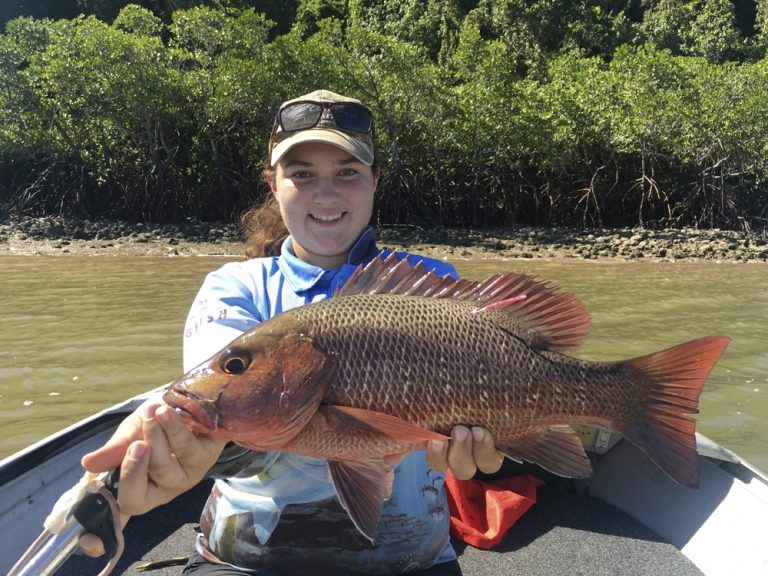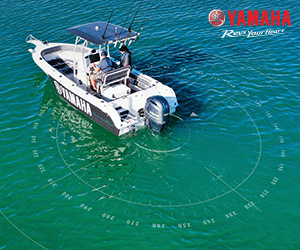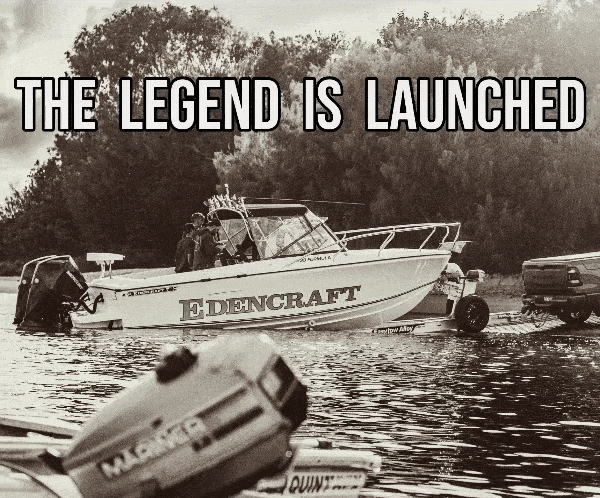Hinchinbrook Jackpot – By Adam Royle
Red dog, red bream, mangrove snapper, whatever you call them, mangrove jack hold a special place in the hearts of many fishers. They hit hard, fight dirty and live in country that tests even the most seasoned weekend warriors.
Fortunately for me, I live in heaven when it comes to mangrove jack. The creeks surrounding Hinchinbrook hold good numbers, and it’s not uncommon to pick-up a dozen fish in an arvo session down the local creek.
Then there’s the majestic Hinchinbrook channel and maze of creeks that flow into this massive system. These waterways are a virtual jackpot (pardon the pun) when it comes to stalking mangrove jack, and I’ve been blessed to have been able to target jacks using a number of different tactics throughout this system.
Almost a quarter of a century has passed since I arrived in Hinchinbrook and for the most part, the first half of that consisted of much the same techniques as I’d grown up with in the south-east. Mullet strips and half pilchards were commonly deployed in and around structure to tempt any prowling creek jacks.
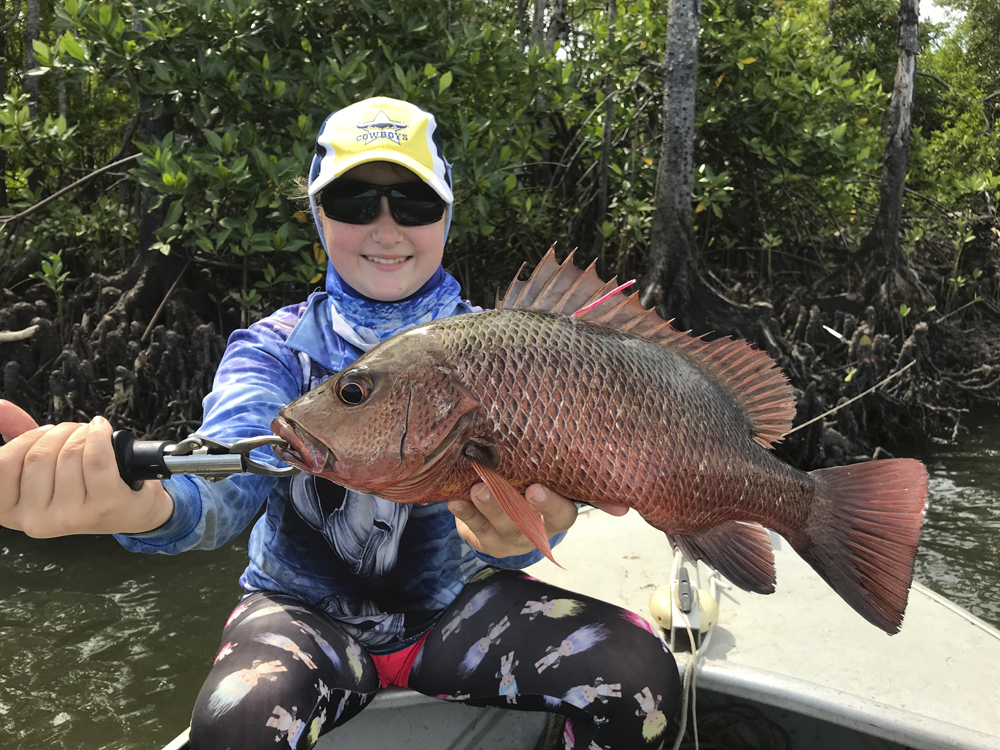
Over time techniques evolved, and although at that time most still revolved around bait, I soon developed a bit of a niche tactic for targeting big creek jacks in the local creek. Launching late at night, or in the wee hours of the morning, I’d anchor close to a large, submerged sand flat that dropped into a deep stretch of water during the last half of the run-out.
I preferred to get in position early, limiting my disturbance of the area, and on occasion would have a quick tactical nap on the floor of the tinnie before deploying baits. I did however always keep one ear on alert for the telltale sounds of nervous baitfish desperately clinging to the last water covering the sand flat. Their desperate attempts to stay away from the deeper edges was my cue to get the baits in the water.
Eventually I learnt how to throw a cast net and progressed to live baits using the same tactics, and as a result, some of my biggest creek jacks fell victim to those midnight live bait sessions. I always look back on those sessions with fond memories, despite the mozzies, rain scuds and the fact that, like those poor baitfish, I was stuck in that creek until the next incoming tide provided me with an escape.

Fast forward several years, and it was by chance that I met my good mate Shannon “Shaggy” Hetherington, who went on to provide me with my next evolution of jack fishing; big daytime creek jacks. Shannon had, over time, worked out where and when big jacks would be feeding during the day in those same creeks. Again, using a combination of fresh flesh baits and live bait, typically mullet or herring, I enjoyed many jack sessions with Shaggy down the local creek.
Up until recent times, I was unable to convert the success of targeting big jacks in my local creeks to those of the waters within the Hinchinbrook channel. In fact, it’s only been the last 5 years or so that I’ve finally been able to predict where, when and how mangrove jack can be found in what is a huge expanse of water; and it’s this experience that I’d like to cover in a little more depth.
In order to explain the where, when and how, I’ve broken it down into three distinct areas; deep snags, rocky outcrops and dense mangrove-lined creeks. By breaking it down to these three areas, it’s allowed me to be able to chase jacks throughout most of the tide, for most of the year, using a variety of techniques.

Deep Snags
Up until this point, most of my jack fishing relied on good tidal flow in order to successfully target the types of areas I fished. This also made sense as many of the creeks I fished previously could only be navigated during the larger tides. But this wasn’t the case in the Hinchinbrook channel. Most creeks in this system could be accessed and fished during any part of the tide, which was both a challenge and an opportunity.
For the first year or two, I went about looking for areas that held good numbers of jacks using a few tried and tested tactics. Once that was established, I started visiting these systems during periods of reduced tidal flow. Systematically working my way through different depths, structure types and times of the tide, it was only a matter of time before I started to discover a pattern. Despite the diminished tidal flow, there was still one simple, cold, hard rule; find the current, find the jacks.

In the end, the real breakthrough came after fitting a new sounder to the tinnie. Wanting to test its capabilities, I moved away from the smaller creeks and scanned larger, deeper sections, which were predominantly positioned lower in each of the systems. I soon discovered that some of the deep banks harboured snags from flood or more typically older slumped banks that often sat in 3-5m of water.
After spending a little more time in these areas, I soon realised that even during the neapest of tides a portion of these deeper snags always had some tidal influence at various stages of the tide. Armed with this info I started soaking baits in and around the deeper snags and soon found that not only were there jacks holding up in these areas, but some of them were unstoppable!

The secret to finding one of these deeper jack holding snags was to identify three key features. The first being their physical location. The best spot was on the front edge of a deeper creek bend. This meant that any tidal movement would have some influence on the structure. If it was on the upstream side, I’d fish it on the outgoing tide and on the downstream side it could be fished on the incoming tide.
The next was the depth of the water, with about 4m (give or take) being the most likely to hold jacks. This depth seemed to work best, and I have a couple of theories that may suggest why. Firstly, the deeper water provides more cover during the cleaner water resulting from neaper tides. It’s also highly likely that other conditions such as temperature and oxygen levels at that depth result in a more comfortable environment for the mangrove jack.
The last piece of the puzzle was to find structure that had fallen or slumped a little further from the bank than the typical creek snags. Sizable structure positioned further from the bank (at least 3-4m) usually harboured more jacks than others.

Rocky Outcrops
It’s no secret that some pretty big jacks like hanging out around rocky structure. Rock bars, isolated outcrops and rocky shorelines, particularly when they’re within a stones’ throw of mangroves are all frequented by mangrove jack.
The bonus of chasing jacks in these areas is that they often share these spots with other fish, such as barramundi. Up until I caught the soft plastics bug I hadn’t targeted jacks in these areas. In fact, most of my early jacks had fallen to a live bait deployed to tempt a passing barra.
After a few years of flicking and trolling rocky areas around Hinchinbrook, I soon picked up a few key tips that helped me focus in on where jacks were holding. While jacks will venture out and across rocky areas, there are two key areas that they seem to prefer.
The first are isolated rocks that lay on the edge of rocky or rubbly shorelines. These areas attract a lot of prawns and baitfish for the jacks to feed on, and they love nothing more than to lay in wait alongside an isolated rock. As the tide falls, their prey must leave the sanctuary of the shallows and will instinctively head for whatever cover they can find, including isolated rocks inhabited by hungry mangrove jacks.

These rocks are also great places to fish in the early part of the incoming tide as the now displaced baitfish and prawns are swept past while attempting to make their way back onto the shallows of the shoreline.
The technique for fishing these isolated rocks is pretty straight forward. Bait fishermen simply need to position themselves up current and cast dead or live baits back towards the isolated rock or rocks. The best rocks are those that sit just off the edge of the shoreline where water creates a funnel between the two. Positioning a bait to the side of these rocks will quickly attract the attention of any resident jacks.
When presenting a lure to fish holding on these rocks, it’s best to do the opposite, positioning yourself slightly down current. From that position, you can cast ahead of the rock and pass your plastic or hardbody lure close by the structure so that any lurking jack will assume it’s a prawn or baitfish hitching a ride in the current.
The other formation I like to target are rocky ledges that run at right angles to the bank. These are typically ledges that are exposed during very low tides or covered by only the shallowest of water. I particularly like a double ledge with a section of water in between that forms a depression that is deeper than any surrounding water. The water in between only needs to be 30-40cm deeper, and it will act like an oasis for any jack wanting to hold up and ambush passing prey.

Double ledges can be fished during both the outgoing and incoming tides, whereas most single ledges tend to be fished during either one or the other. Again, these areas tend to lend themselves to the bottom half of the tidal influence, typically during periods where the water has receded from nearby mangroves, small creeks and other such structures higher up the system. These ledges are often less than a metre in depth and can hold several jack.
Unlike isolated rocks, prey passes overhead as it rides the tidal currents across the shallows and over the top of the ledge. In this situation, baits or lures can be worked over a wider area, depending on the size of the ledge, but still needs to be presented in a way that mimics a passing baitfish or prawn.
While I’ve mainly concentrated on rocky ledges and isolated rocks, larger rock bar formations are also great places to target jacks. These areas can have the characteristics of both isolated rocks and rocky ledges, depending on their location, type of formation and the stage of the tide. The answer to how they should be fished is typically found by identifying what the main tidal influences are and adjusting your technique accordingly.
Heavy Mangrove-lined Creeks
As their name implies, mangrove jack can be found in almost every mangrove-lined creek in Queensland. The maze of Mangrove roots and fallen timber found in these creeks provides prime cover from which mangrove jacks can ambush prey.
Live baiting these systems can produce good numbers of jacks, particularly if you know where to look for them. My preference is to prospect the smaller creeks with depths of about 1-2m on average. What you’re looking for is a deeper section, usually on a bend, that drops away to 2-3m and has some form of structure that is under direct tidal influence, particularly during an incoming tide.
Presenting a lightly weighted live prawn or greenback herring will attract plenty of attention, but you’ll soon find you’re hard earned livies rapidly disappearing to bream, cod and other by-catch. My preference is to use good sized mullet to avoid the unwanted attention. Bream can get pretty aggressive, particularly during spawning season, and smaller mullet don’t last very long. I’ve seen barely legal jacks take mullet 20cm in length, so don’t be afraid to up-size your live bait. Just remember to adjust your fishing accordingly by upsizing hooks and giving the jacks a little more time to commit, without allowing them to bury you in nearby structure.
Over the years I’ve become fairly successful in live-baiting these systems, but until recently my success in targeting jacks with plastics in these creeks had been somewhat limited. While the absences of an electric on the tinnie was part of the problem, I soon found it was my technique that was the biggest reason for my lack of success.
That all changed when Nathan Johnston from the Keppel Bay Sportfishing club introduced me to the virtues of skip casting during a trip to Cooktown. Pretty soon my catch rate in these systems doubled, then tripled, and it wasn’t long before an average after work jack session was producing up to a dozen jacks or more during peak season.
While some mangrove jack are happy to patrol the edges of the mangroves, I soon discovered that most simply refuse to venture outside of the safety of their mangrove root or fallen timber homes.
By applying a weedless approach and learning to skip cast, those less adventurous jacks were pretty soon crunching down on my offerings. There are plenty of skip casting videos on YouTube so rather than try to explain it in words, I’ll leave it to you to find a few tutorials online.
The best advice I can give you is to firstly get your weedless rigging skills up to scratch; otherwise you’ll be spending more time retrieving plastics from deep in mangrove cover, or worse still spending a heap of dollars to replace them!
Another bit of advice is never to be afraid to skip your plastic into the deepest, gnarliest structure you can find. I have only one rule when it comes to structure and skip-casting; if I think there’s a chance I can get my plastic in there… I’ll give it a go. There will be plenty of time to worry about how to get the fish out when you hook it. Although I’ve been dusted up by some unstoppable jacks, I’ve also been amazed at the jacks I’ve pulled from what initially seemed like an impossible position.
Another thing I’ve learnt over the past year or so is that not all creeks are born equal when it comes to the number of jacks they hold. My ability to sniff out a good creek is still evolving, but there are some basic ingredients I now look for.
Rather than working my way up large creeks until I find a section I like, I prefer to find creeks that are about 10-20m wide at the mouth. The next thing I look for is the sort of tidal flow the creek experiences. I prefer to fish tides with about 1-1.5m of movement as the clearer water typically results in better jack fishing. In some systems, these tides don’t produce as much tidal flow and simply don’t hold the numbers of jacks that others with good water movement do.
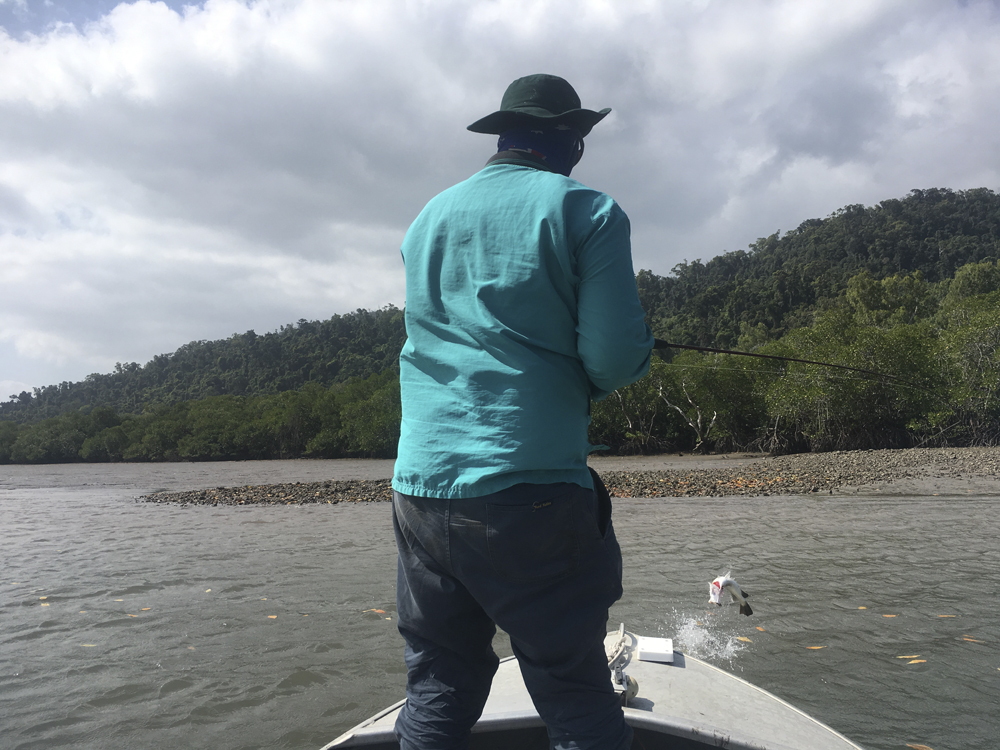
I next look for structure that I think will hold fish. Most creeks have structure, but you want to look for mangrove roots, and fallen timber with overhanging cover or that is creating a pressure point, or better still has both.
There are a few other recipes that make for good jack holding territory but to be honest there is no substitute for time on the water as far as deciding on whether one creek, stretch of bank or single structure, is better than another. Once you get your eye in though, you’ll pretty quickly be able to recognise the prime spots when you see them.
Well, I hope these insights have shed some light on how you might be able to start or perhaps tweak how you approach your mangrove jack sessions. For the most part, my experiences with targeting mangrove jack have been in Hinchinbrook, but I’m confident it can be translated to other systems, at least in the northern half of Qld. No matter how you chase them, mangrove jack are one of those fish that will have you coming back for more and more, and it’s an addition you’ll be happy to live with. Catch Ya!


